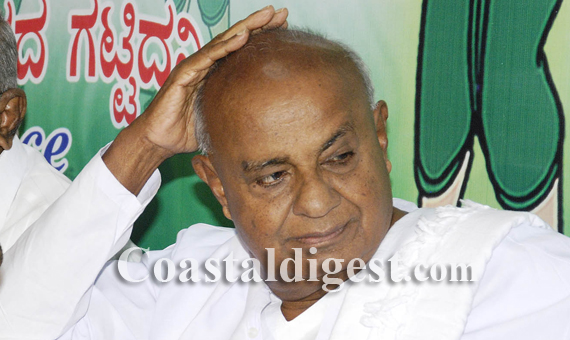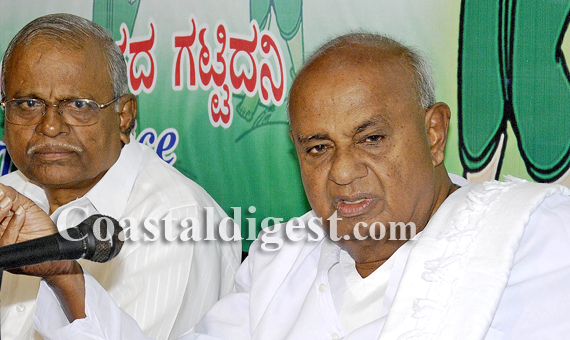
Bangalore, Aug 6: The scene for the ensuing byelections to the two Lok Sabha and three Legislative Council seats is hotting up with the leaders of the ruling Congress and principal opposition JD(S) making allegations and counter allegations.
Chief Minister Siddaramaiah on Monday said the reported move by the JD(S) and the BJP for an understanding in the bypolls has exposed the true colours of the JD(S). However, JD(S)?supremo H D Deve Gowda strongly denied that there was any such move and chose to call it a conspiracy to tarnish his party's secular credentials.
Speaking to reporters here, Siddaramaiah said the bypolls will reveal as to who is secular and who is communal. “People will get to know about Deve Gowda and H D Kumaraswamy who always boast about being secular...One can't become secular just by adding the word secular to the name,” he observed.
He recalled that Gowda had said that forming a coalition government with the BJP in the State in 2006 was a big mistake.
But, he is again going with the saffron party. Kumaraswamy has already said that he is not sorry about joining hands with the BJP in forming the government, he said.
At a separate press conference, Gowda said there is neither any alliance nor understanding with any party.
“It is left to the respective party to field their candidates or not. No body can question my credentials,” he stated.
On reported efforts being made by Kumaraswamy for reaching an understanding with the BJP, Gowda said: “It is not proper to give political colour to everything. I am the national president of the party. Kumaraswamy is the State president,” he stated.
Kumaraswamy is said to be holding talks with the BJP leaders with an aim of giving an united fight to the Congress in the bypolls. Leaders of both the parties reportedly reached an agreement. Accordingly, the BJP would help the JD(S) in the Lok Sabha bypolls to Bangalore Rural and Mandya seats by not fielding its candidates and the latter would, in turn, help the BJP in the Council bypolls in the same way.
But, the agreement was not finalised as the BJP wanted it to be made official, while the JD(S) was opposed to it. Kumaraswamy wanted it to be a tacit understanding as he feared losing the support of the minority communities.
No JD(S) nominees
Interestingly, the JD(S) did not field its candidates for any of the three local authorities constituencies for the Council bypolls – Mysore, Chamarajanagar, Hubli-Dharwad, raising doubts of a possible tacit understanding with the BJP. Monday was the last date for filing nomination papers.
Sources in the BJP said leaders of the two parties are still holding talks. Wednesday is the last date for withdrawal of nomination papers for the byelections to the two Lok Sabha seats.








Comments
Add new comment